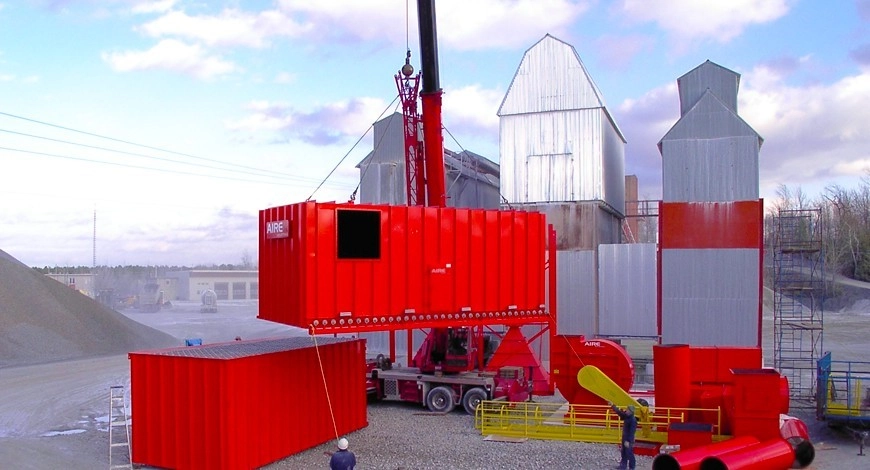
Challenges of the Economic Recovery: Airex is Innovating and Adapting!
Good news: global markets are picking up steam and the economic recovery is coming faster than expected! Many companies are having to respond to new needs that emerged during the pandemic or upgrade their equipment, while some are expanding or relocating.
As a result, in addition to the manufacturing sector not being up to full speed yet, the demand for new dust collection systems is increasing, and this exceptional situation is affecting our time lines. So this month, we want to point out the role you can play in making a successful request using this checklist of our new procedures.
How do you launch a new project?
In order to respond to your requests more effectively, we have optimized our specialists’ time. Here’s how you can help them help you!
Visiting a new client: yes, but not right away!
Under normal circumstances, during a new dust collection project, an Airex specialist visits the facilities at the outset. The current context is putting tremendous demand on the estimators’ and project managers’ schedule. It is not humanly possible to visit all facilities, especially since some health measures are still in effect. The visit may happen later in the process.
Budget estimate: new way of doing things
With a set of preliminary information, we can undertake a significant portion of the work and submit an estimate, all without travelling. This new step makes it possible to launch a project, while confirming that it meets your budget expectations.
This is where you come in! In order for the process to be optimal, you can help us gather important data.
Information gathering for a new project:
- Type of dust (quantity and particle size): if you produce standard dust (wood, metal, etc.), our team will know which system to suggest. If you need to control specific dusts (pharmaceutical, petrochemical, plastic and resin sectors), you can have your particles tested at an external laboratory to determine the explosiveness rate (especially the Kst values and maximum pressure).
- Specifications of the machines and tools used (makes and models).
- Quantity and diameter of the capture points on the existing or future equipment to be connected to the dust collection system.
- Number of operating hours of the equipment requiring dust capture.
- Layout plan with dimensions (or a sketch with dimensions if the need is simple) in order to visualize the workstations and plan the duct system.
- Photos or videos to help understand some of the constraints (e.g. if there is a mezzanine).
Other factors to consider are the nature of the mandate and its time frame for completion. If the project involves delivering equipment to a site supervised by a general contractor, the work is facilitated. Conversely, a turnkey project requires more time because we have to manage it from start to finish.
With this information and Airex’s 45 years of expertise, we can determine your needs by referring to previous jobs.
Fixed price quotation and validation
The budget estimate helps ensure that everyone is on the same page. With the quotation, it is possible to factor in certain additional costs. For example, the increase in the price of certain materials (such as steel) or the costs arising from subcontracting and outsourcing if the delivery pace has to be sped up.
Once the estimate is accepted, our team prepares a formal quotation. If a visit is required, our experts then travel in order to validate and clarify certain features specific to your environment.
The key: plan early!
Right now, manufacturing and delivery times are much longer than normal. Therefore, it’s better to get to it sooner rather than later. As soon as you think you need a dust collection system, even in the medium term, you would do well to start the process right away.
With your quotation and purchase order in hand, you are placed on the list of current projects, even if you aren’t ready to receive the system right away. Since the payment terms are spread out, nor will you have to pay the entire bill immediately.
Airex Is Actively Seeking Solutions
To optimize production and delivery times, we have also improved our manufacturing processes and the design of some units. We now favour bolting the machines, rather than welding, and we offer more galvanized steel products instead of painted models: it’s faster – and just as reliable! Where possible, we are revising the design of our systems to make them more compact. A detail that helps offset the increased price of steel and makes installation easier.
By working together, we will be able to optimally carry out your projects! Are you ready to make them a reality?
